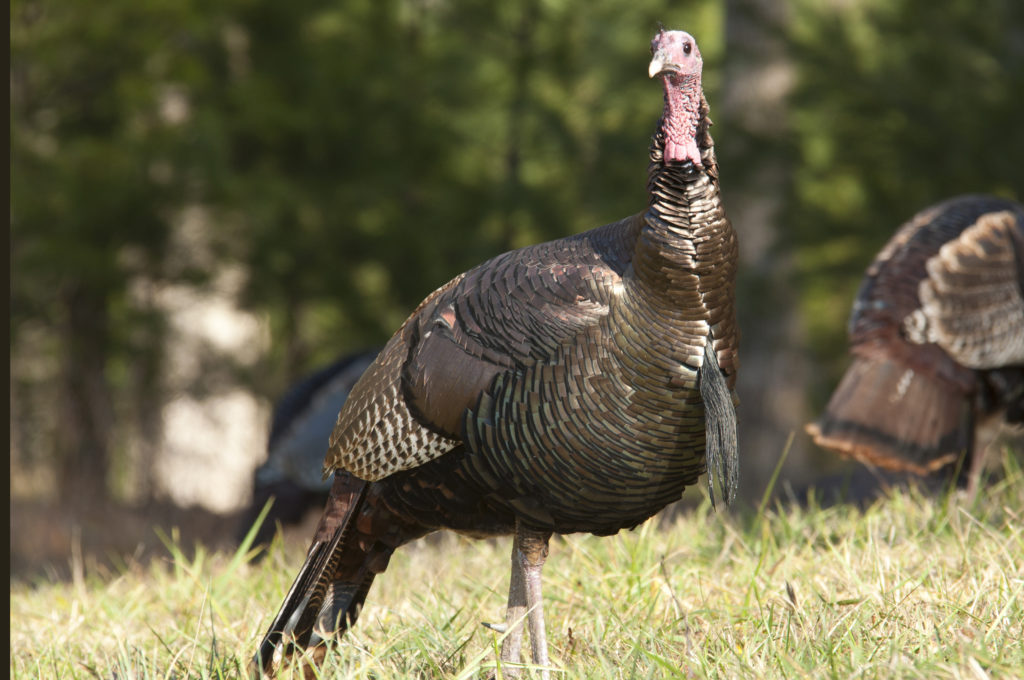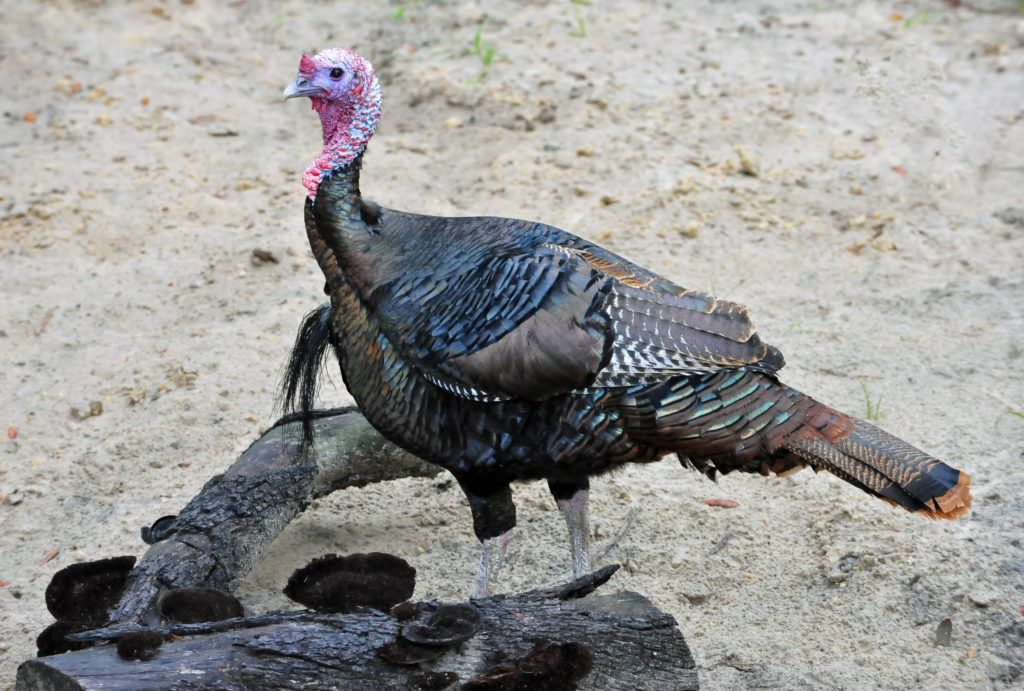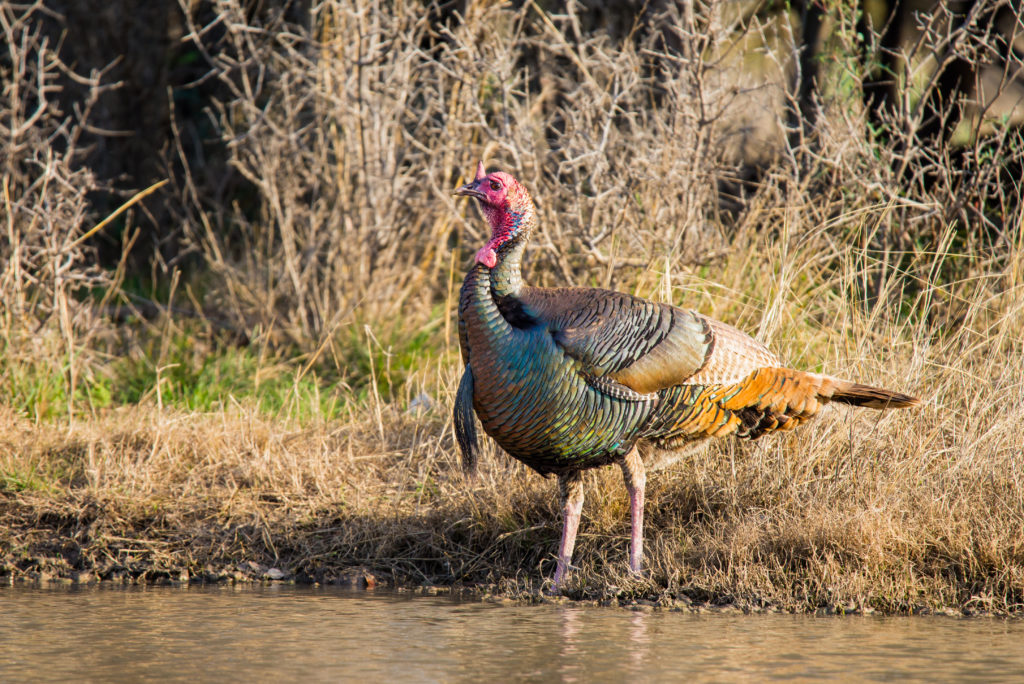Learn more about turkeys and wild turkey breeds in this excerpt from Don Schrider’s “Storey’s Guide to Raising Turkeys”.
WHEN WE SPEAK OF TURKEYS, we will find some surprising diversity. Turkeys come in a range of colors and patterns, and a few different shapes as well. As we try to sort through this mix, it is well to first sort things out according to body shape and purpose.
Three Turkey Types
There are essentially three types of turkey:
- The wild turkey, which nature has designed to be independent and self-sustaining
- The heritage or Standard turkey, which farmers have domesticated and bred for meat production and for beauty
- The commercial broad-breasted turkey, which industry has bred to have profuse amounts of flesh, at the cost of natural mating and some mobility
Each of these types has a slightly different structure — and each structure gives those turkeys some advantages.
Selecting the Right Birds
As you choose the right turkeys for your farm or enterprise, you must know the end product you wish to produce, the method of husbandry you expect to use, and your own expectations to match them with the correct type and variety of turkey. For example:
- If your market is a high-end restaurant looking to serve game, you should raise wild turkeys (but understand you may need a permit to do so).
- If you wish to garner higher prices per pound for heritage turkeys raised on pasture, you should choose a variety of heritage turkey.
- If your market wants a truly large turkey, and if you plan to use indoor production, you should consider the commercial broad-breasted variety.
Wild Turkeys
Though few readers are likely to raise wild turkeys, here is a brief description of this type of turkey. Keep in mind that wild turkeys are wild.
This means:
- They will not be completely happy unless they have ample room to satisfy their inquisitive natures.
- They are easily startled — a survival trait.
- They can fly.
- They are as likely as not to decide to run away if given a chance.
Wild Turkey (Eastern)
Once called the “forest turkey,” this subspecies has the largest range of all wild turkeys, from northern Florida to Maine and all across the eastern half of the United States, up into the Canadian provinces of Manitoba, Ontario, and Quebec. Males can reach 30 pounds (13.6 kg) in size and 4 feet (1.2 m) in height. They have tail coverts tipped with chestnut brown.

Eastern Wild Turkey. Adobe stock.
Gould’s Wild Turkey
This turkey subspecies is native to Arizona, New Mexico, and the central valleys and northern mountains of Mexico. They are the largest of all subspecies, with longer legs, larger feet, and longer tail feathers. Body feathers are copper and greenish gold in iridescence.

Gould’s Wild Turkey. San Pedro House, Sierra Vista, Arizona. Photo by Bettina Arrigoni.
Merriam’s Wild Turkey
This subspecies ranges across the prairies of Montana, South Dakota, and Wyoming, as well as through the Rocky Mountains and high-mesa country of New Mexico; there’s also a pocket in Idaho and Oregon. Merriam’s Wild Turkeys prefer mountainous areas with ponderosa pine. The tails and lower back feathers of this subspecies have white tips and purple and bronze iridescence.

Merriman’s Turkeys, Parowan, Utah. Getty Image.
Osceola Wild Turkey
Also known as the Florida Wild Turkey, this bird ranges across the Florida peninsula. Its body feathers are green-purple in iridescence, the wing feathers are dark with small amounts of white barring, and it is smaller and darker than the Wild Turkey (Eastern).

Osceola Turkey (Meleagris gallopavo osceloa). Photo by Heather Paul.
Rio Grande Wild Turkey
This subspecies ranges along the Rio Grande River; it is also found in Colorado, Kansas, New Mexico, Oklahoma, Oregon, and Texas. It has been introduced to a few eastern states, to central and western California, and to Hawaii. These turkeys have long legs and are adapted to prairies. Their body feathers have a green coppery sheen, their lower back feathers are buff to very light tan, and the tips of their tail feathers are buff or light tan.

Wild Rio Grande turkey. Getty Images.
South Mexican Wild Turkey
Considered the nominate — or first-named — subspecies, South Mexican Wild Turkeys range in the southern expanses of Mexico and were the first wild turkeys encountered by Europeans. The Aztecs domesticated this subspecies, thus giving rise to domestic turkeys. The tame descendants of the South Mexican Wild Turkey traveled with Spanish explorers back to Spain, and later spread throughout Europe.
Commercial Broad-Breasted Turkeys
There are a small number of different strains of commercial turkeys. Industry closely guards their genetics, so the primary strains are very difficult to obtain. Poultry hatcheries do, however, make available some of these broad-breasted genetics.
You can order Broad Breasted White or Broad Breasted Bronze turkeys from hatcheries. Expect the poults to grow into very large turkeys that will be ready for processing within 16 to 20 weeks. Feed conversion will be excellent. These turkeys cannot mate naturally, so if you plan to breed them, see the section on artificial insemination in this book (page 221).
Primary Commercial Strains
Nicholas: Owned by Aviagen, available In the United States
Hybrid: Owned by Hybrid Turkeys of Canada, available In the United States
British United Turkeys (a.k.a. B.U.T): owned by Aviagen, available In the United Kingdom and Europe.

Broad breasted bronze and white turkeys. Adobe Images
Excerpted from Storey’s Guide to Raising Turkeys © by Don Schrider. Used with permission from Storey Publishing.













2 Comments
Hello; Looking for Eastern wild and Osceola turkeys to buy?
Thanks…very informative!
God bless!